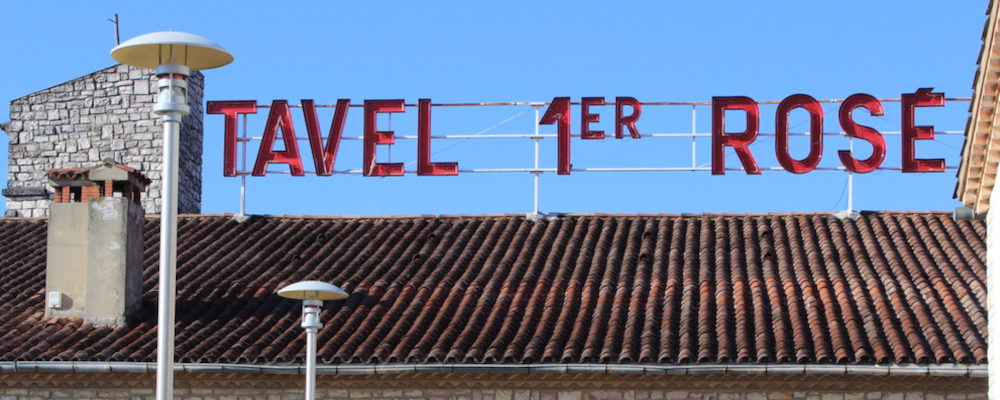Here is the story of how the very first rosé isn’t one at all, except it’s the best. I refer to Tavel, the name of the wine and of the small town in the South of France where it is grown and made.
Tavel lies on the right (east) bank of the Rhône just north of Avignon, and opposite its left bank twin, the much better known, Châteauneuf-du-Pape. The two towns, and the wines they are famous for, form a kind of ying and yang of the Southern Rhône. They share the same climate, the same soil types and are made with the same combination of grapes, with Grenache usually acting as the dominant one in the blend.
They also have a history of papal patronage going back to the middle ages, not just at Avignon but also in Rome. But while the wines of Châteauneuf have always been coveted for their brooding dark fruit, Tavel has always been a red wine made in a clear lighter style. It’s just that no one thought to call it rosé until the last half of the 20th century.
The colour of a wine depends partly on the grape variety, or varieties, used to make it. But while you can’t make red wine from white grapes, you can make orange wine from them, and you can certainly make white wine from red grapes.
This is because the way to extract colour from grapes, that have begun to ferment into wine, is to leave the juice that has been pressed from the fruit, in contact with the skins. In Champagne they make Blanc-de-Noir, a white sparkling wine, by separating Pinot Noir from its skins right away.
Some red wines might be left to “macerate” on their skins for several days, and if the winemaker wants to intensify the process, she might “bleed” some of the juice off of the skins. Bleeding red wines is, in fact, a way to make rosé with the juice that has been removed, though it’s not how they make Tavel.
The rules for making Tavel are ancient and as clear as the wine: contact with the skins will be for the one night after the grapes have been pressed. This is enough to make Tavel a deep pink verging on ruby red.
In the two decades that I have been writing about wine, I have watched rosé go from a niche product to an established one. In the warm weather months, it’s become unremarkable to be offered a glass of rosé in the backyard of a friend.
The style of rosé that is predominant here and around the world is ‘Provençal’: a crisp with a light coppery or salmon hue. This colour would have come from very limited skin contact. Generally speaking, I like these wines fine, but for the nearly always present note of strawberry, they may as well be white wines.
There’s no structure, nor weight on the palate. Lacking complexity, they strike me as being designed to be drunk quick and cold on a warm evening. The Provençal-style rosés serve their purpose, but there are very few of them that could carry a diner through a meal.
Tavel is almost always recognizable on a store shelf, in part because of its distinct tall and skinny clear bottle, but mostly for its deep pink colour. The colour is the clue that the wine will have some tannic structure and weight from being on its skins overnight. Those skins provide more than texture, they also provide flavour. Beyond strawberry are the red fruit flavours associated with Grenache, like cherry and raspberry. Tavel wines really do show more like a very light and racy red with a line of acidity that will take them through from aperitif to a main course of grilled meat.
In 1936 Tavel was named as one of France’s first Appellation d’Origine Contrôlée, demarcated by a small area of land around the town, and given the restriction that only “Tavel” (in other words, rosé that’s not really rosé) could be made there. This has had the effect of keeping the production and the number of producers small.
There are only about two dozen producers, and maybe the same number of growers that sell grapes to the Tavel co-operative or one of the big houses of the Rhône Valley like Guigal or Famille Perrin.
In the past couple of decades, when faced with competition from the Provençal rosé the producers decided to double down on their tradition of making a ‘vin gastronomique’ instead of changing the way they make wine to follow fashion.
Unfortunately this means that Tavel has become pricier than most rosé, usually within $25 to $30 a bottle. Fortunately, though, they’ve kept their audience and seem to be growing it steadily, as Tavel wines are widely available, especially now that it’s the season for them.
As a small appellation with strict controls on production, the quality of Tavel wines is fairly uniform and consistent. The producers below are in most markets in this country and make wines that I have enjoyed very much.
Château d’Acqueria: aqueria.com
Château de Manissy: chateau-de-manissy.com
Domaine LaFond Roc-Epine: roc-epine.com
Domaine Maby: domainemaby.fr
Domaine de la Mordorée: domaine-mordoree.com




